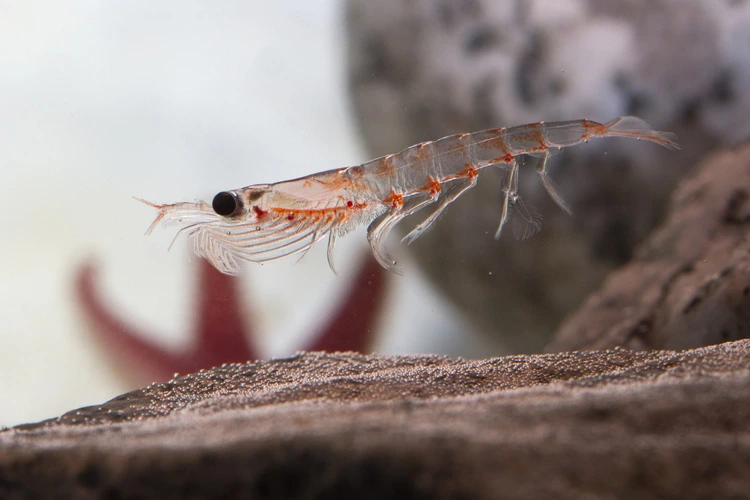
Migration of these microscopic animals – known as a ‘seasonal migrant pump’ – supports carbon sequestration in the Southern Ocean
By
They’re small, but certainly mighty. In fact, zooplankton – creatures so minute that they sometimes aren’t visible to the naked eye – have been playing a major role in the Southern Ocean’s ability to store and absorb carbon, a new study has found.
Headed by a team of international researchers, and published in Limnology and Oceangraphy, the study revealed how zooplankton carry out seasonal, vertical migrations with an inadvertent benefit of carbon sequestration.
Enjoying this article? Check out our related reads:
Traditionally, scientists have understood carbon sequestration – the process by which carbon dioxide is absorbed from the atmosphere, mitigating climate change – to occur in the Southern Ocean through the sinking of detritus produced by creatures feeding on zooplankton, such as krill. This detritus can include waste materials such as poop, molts and carcasses.
But the new research uncovers the fascinating ‘seasonal migrant pump’ that zooplankton are part of between autumn and overwinter, a process by which they migrate from ocean surfaces to depths below 500m in the Southern Ocean. As they descend into the deep, zooplankton inject carbon into the deep ocean via their respiration and mortality.

The key players in this process are mesozooplankton (small crustaceans known as copepods), accounting for around 80 per cent of carbon sequestration. In comparison, krill and salps contribute 14 per cent and 6 per cent, respectively. Each year, these creatures drive an estimated 65 million tonnes of carbon – equivalent to the emissions of more than 14 million cars annually – down into the depths of the ocean.
Currently, detailed computer programs that simulate the Earth’s climate (known as Earth System Models) overlook this phenomenon, a fact that scientists are keen to change.
‘Our work shows that zooplankton are unsung heroes of carbon sequestration,’ said first author and Marine Ecologist from Institute of Oceanology Chinese Academy of Sciences, Dr Guang Yang. ‘Their seasonal migrations create a massive, previously unquantified carbon flux – one that models must now incorporate.’
With an ever-warming climate, species distributions may change in the future, potentially impacting the extent to which the seasonal migrant pump can operate.
Why are zooplankton so important?
It’s not just carbon sequestration that zooplankton have a vital role in. These microscopic organisms are pivotal in maintaining the oceanic food web, moving nutrients up the food chain in a process known as nutrient cycling. Zooplankton do this by eating bacteria and algae, the base of the food web, before being eaten by many other fish.
These creatures also can affect water quality, the density of algae along with fish production.
However, several factors threaten their existence. A study by University of Plymouth found that climate change, along with high microplastic concentration, severely impact their survival in our planet’s oceans.




